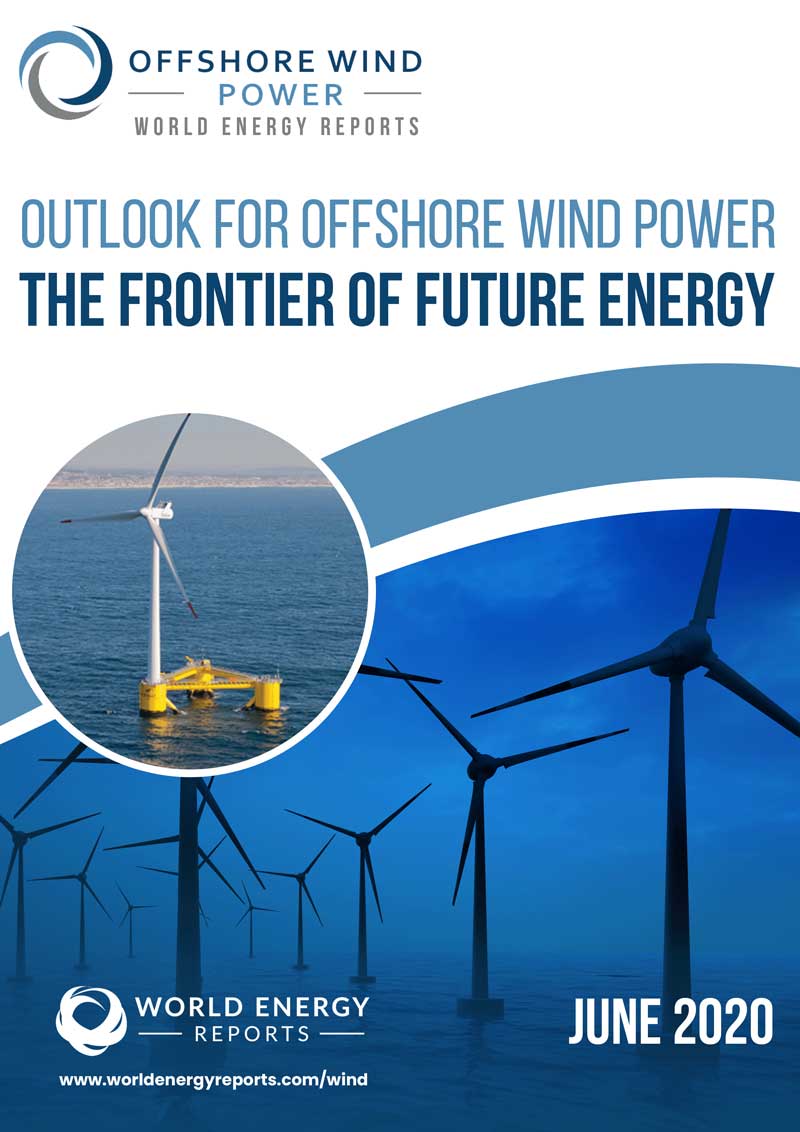The comprehensive, in-depth market research report allows you to access precise market data and authoritative business insights on the offshore wind market. Highlights include:

1: Overview of the industry
1.1.: Section summary
1.2.: Setting the context
1.3.: Installed offshore wind capacity
1.4.: What is offshore wind used for?
1.4.1.: Grid-supplied electricity:
1.4.2.: Decarbonisation of offshore oil & gas operations
1.4.3.: Green hydrogen
1.5.: Characteristics of offshore wind projects
1.6.: A typical offshore wind farm
1.7.: Layout of wind farms and wake loss
1.8.: Foundation choices
1.9.: Who develops, owns, and operates wind farms?
1.9.1.: A look at the Top 5 players
1.9.2.: The oil & gas major oil companies and their energy transition plans in OWF
1.10.: Forecast for offshore wind growth
1.11.: A word on COVID19 / 2020 economic downturn
1.11.1.: World Economic Outlook
1.11.2.: Impact on the offshore wind industry
2: The cost of offshore wind energy
2.1.: Section summary
2.2.: The levelized cost of energy (LCOE)
2.3.: Installed costs
2.3.1.: Capital costs by component
2.3.2.: The costs of developing and project management
2.3.3.: Trends in offshore wind turbine (OWT) design and costs
2.3.4.: Wind turbine capacity factors
2.3.5.: Balance of Plant
2.3.6.: Installation and commissioning
2.4.: Operations, maintenance and service (O&M) costs
2.5.: End of life decommissioning
2.6.: Project returns
3: A review of the offshore wind potential of various markets
3.1.: Section summary
3.2.: Offshore wind technical potential
3.3.: Regional overview
3.3.1.: Europe (including the UK)
3.3.2.: UK
3.3.3.: Germany, the Netherlands, Denmark, and Belgium offshore wind activity overview
3.3.4.: Germany
3.3.5.: The Netherlands
3.3.6.: Denmark
3.3.7.: Belgium
3.3.8.: Other Europe
3.3.9.: APAC
3.3.10.: China
3.3.11.: Japan and South Korea offshore wind potential
3.3.12.: Japan
3.3.13.: South Korea
3.3.14.: Taiwan
3.3.15.: Vietnam
3.3.16.: Other APAC
3.3.17.: North America
3.3.18.: The USA
3.3.19.: Other North America
3.3.20.: Other regions and countries
3.3.21.: Brazil
3.3.22.: India
3.3.23.: Other regions / countries
4: Challenges to the development of the offshore wind sector
4.1.: Section Summary
4.2.: Development of efficient supply chains
4.3.: Environmental concerns
4.3.1.: Overview
4.3.2.: Environmental impact studies
4.3.3.: Sulphur hexafluoride (SF6)
4.3.4.: Foundation impacts on the seabed
4.4.: Variability of wind as a resource and energy storage
4.4.1.: Battery energy storage systems (BESS)
4.4.2.: Hydrogen to address variability
4.5.: Onshore and offshore grid development
5: Wind to green hydrogen
5.1.: Section summary
5.2.: Introduction to hydrogen as an energy carrier
5.3.: Green hydrogen and offshore wind
6: Floating wind
6.1.: Section summary
6.2.: Introducing floating wind
6.2.1.: Why floating wind?
6.2.2.: Horizontal (HAWT) or Vertical axis turbines (VAWT)
6.2.3.: Barriers to FOWF growth
6.3.: Floating offshore capacity
6.3.1.: Installed floating offshore wind capacity
6.3.2.: FOWF pipeline getting larger
6.4.: Costs of floating wind
6.5.: Floating offshore wind
6.5.1.: What are the three main floater types?
6.5.2.: Status of the close to 50 most known about floating concepts
6.5.3.: Transmission and Distribution
6.6.: Review of the more advanced floating offshore concepts
6.6.1.: Equinor Hywind
6.6.2.: WindFloat
6.6.3.: Fukishima FORWARD Phase 1, 2a and 2b
6.6.4.: Ideol Damping Pool
6.6.5.: SBM-IFPN Offshore Wind Floater
6.6.6.: Naval Energies semi-submersible flouter
6.6.7.: W2Power
6.6.8.: Testraspar:
6.7.: Details of promising concepts under development
6.7.1.: Hybrid concrete and steel spar
6.7.2.: EOLINK
6.7.3.: SATH:
6.7.4.: PivotBuoy
6.7.5.: HEXICON
6.7.6.: SeaTwirl
6.7.7.: OO Star Wind Floater
6.7.8.: GustoMSC Trifloater and Spinfoat
6.7.9.: VolturnUS
6.7.10.: SCDnezzy2 multi-turbine concept
6.7.11.: Wind Lens
6.7.12.: Poseidon
6.7.13.: TrussFloat
6.7.14.: TLP Concept, Shanghai Green Environmental Co.
6.7.15.: China Longyuan concept
6.6.15.: Tonex VAWT
6.7.: Details of early stage concepts needing finance to move to the next level
6.7.15.: Nautilus semi-sub
6.7.16.: Tetrafloat
6.7.17.: PelaStar TLP
6.7.18.: DeepWind concept
6.7.19.: Windcrete
6.7.20.: Rimdrive
6.8.7.: Blue H TLP
6.8.8.: GICON-SOF
6.8.9.: ECO TLP
6.8.10.: Windsea
6.8.11.: SpiderFLOAT
6.8.12.: FLOTANT
6.8.13.: FLoatVAWT
6.8.14.: 12MW TLP
6.8.15.: ARCUS
6.8.16.: Concrete FOWT
6.9.: Discontinued / dormant concepts
6.9.7.: Spin Wind
6.9.8.: SWAY
6.9.9.: Vertiwind by Nenuphar
6.9.10.: Skwind (MODEC)
6.9.11.: TLPWIND
6.9.12.: Advanced Floating Turbine
Appendix 1: UK operational wind farms
Appendix 2: German operational offshore wind farms
Appendix 3: Dutch operational wind farms
Appendix 4: Danish operational offshore wind farms
Appendix 5: Belgium operational offshore wind farms
Appendix 6: Chinese operational offshore wind farms
Appendix 7: Japanese operational wind farms
Appendix 8: South Korean operational offshore wind farms
Appendix 9: Taiwanese operational wind farms
Already a subscriber? Login